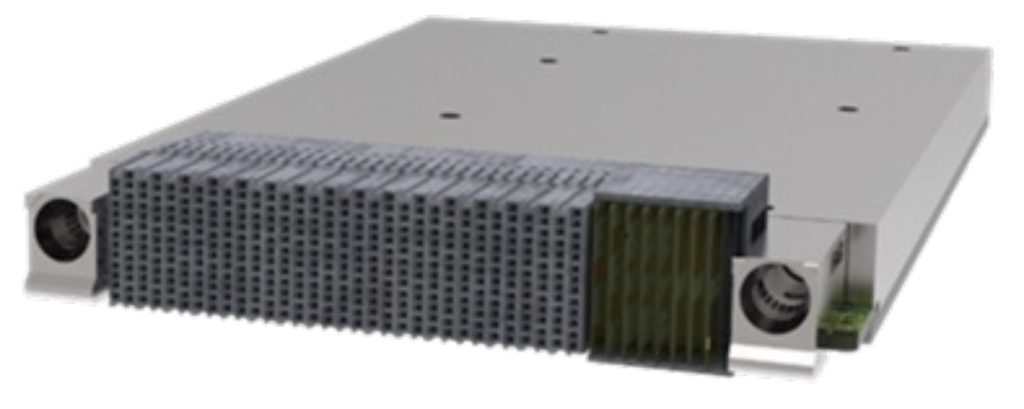Three standards have recently been ANSI- and VITA-approved via public VITA consensus ballot and published by VITA. Each has a unique background as to why it became a published standard. The following is a short synopsis of each of the standards.
ANSI/VITA 67.3-2023
Coaxial Interconnect on VPX – Spring-Loaded Contact on Backplane
This release is an update to a previous version of this standard. VITA standards are constantly monitored per the development process and updates can be requested at any time. This presents opportunities for improvements, revisions, or corrections to these standards, making them more relevant to the user community.
The VITA 67.3 standard defines coaxial connector modules used within the VPX architecture. The aperture concept defined in the base standard makes it possible to define new connector schemes that fit within the defined aperture opening. This revision adds 75-ohm SMPM and 75-ohm NanoRF contact interfaces to support video applications.
The primary goal of this standard is to build upon the framework laid out in VITA 67.0, VITA 67.1, and VITA 67.2 for detailing blind-mate analog interfaces. VITA 67.1 and VITA 67.2 only allow for a cable termination on the plug-in module’s contacts. Routing cables to another connector on the Plug-In Module can be difficult and unnecessary. The driving objective is to allow fixed contacts on the Plug-In Module and spring-loaded contact action on the backplane. This functionality allows for alternate packaging of the connector modules, potentially eliminating all cables on the Plug-In Module.
As the industry has progressed since the initial VITA 67 standards, the need for higher-contact densities has arisen. In addition to the physical space reductions by eliminating cable management, the VITA 67.3 backplane connector modules further increase space efficiency by taking advantage of the full 1.00-inch slot pitch. The contact position within the housings are no longer constrained to the fixed 2×2 and 2×4 SMPM arrays for greater flexibility and contact count.
The VITA 67.3 standard was written with future expansion and backward compatibility in mind. The standard structure defines the contacts in Section 3, connector modules in Section 4, and integration in Section 5. The contacts available are SMPM as described in Section 3.1, with higher-density interfaces SMPS in Section 3.2 and NanoRF in Section 3.3. The connector module rules within Section 4 allow for application specific implementation, and when combined with Section 5, ensure interoperability.
The connector module definition within Section 6 is designed with overarching VPX compliance in mind and included in connector modules specified in VITA 65.1 for use in VITA 65 OpenVPX slot profiles. These slot profiles support an ever-evolving ecosystem without ever needing to alter the backplane. Payload plug-in modules could be replaced as new capabilities, integrated within a slot, or require additional contacts with different arrangements. The upgrade is as simple as replacing the existing backplane connector module with the vendor provided replacement.
Integration of RF and optical contacts within a single connector module is defined in VITA 66.5. This motivation is supported to optimize the SWaP [size, weight, and power] of the VPX ecosystem. This aspect is of particular importance in 3U applications where backplane I/O is a limited resource. Sharing the connector module makes the best use of the available space while providing the flexibility designers require.
ANSI/VITA 87.0-2024
MT Circular Connectors – Type 1
As high-speed, high-bandwidth applications increase, so does the demand for high density interconnect solutions. Bridging the gap between active devices on the backplane and external equipment requires a rugged high-density small form factor interface.
This is a new standard that defines high-density circular MT connectors utilizing plug and receptacle shells from the MIL-DTL-38999 family.
Circular MIL-DTL-38999 plug and receptacle shells provide a stable proven platform for thru-panel and inline applications. Pairing the commercial industry-standard MT ferrule with the MIL-DTL-38999 shells and unique inserts establish the groundwork for a reliable I/O connector family. This standard addresses a new connector interface that will support rugged high-density MT applications.
The objective of this standard is to describe the mechanical structure surrounding the optical MT interface, alignment features, and physical parameters required to provide optimal optical performance of the mated connector pair.
The interconnect system defined in this standard consists of MIL-DTL-3899 plugs and receptacles in sizes 11, 13, and 15. The scope of this standard includes shell size 11 with 1 MT ferrule, shell size 13 with 2 MT ferrules, and shell size 15 with 4 MT ferrules. The inserts for each shell size are keyed to provide multiple ferrule orientations with respect to the shell master key. Larger shell sizes might be added in the future for higher-density requirements. Included in this scope are plugs and receptacles with fiber lens or physical contact (PC) MT ferrules.
ANSI/VITA 91.0-2024
Connector for Higher Density VITA 46 Applications
Higher data-rate protocols are being designed into OpenVPX systems, enabled by processor technology advancements supporting higher signal speeds and more cores. Newer protocols such as PCIe Gen 5 and 200GBASE-KR4 Ethernet are being implemented and these protocol standards have road maps for higher data rates, in some cases doubling every two or three years.
As signaling rates increase above 25 Gbaud, the VPX slot connector needs to evolve to support signal-integrity requirements in the channel. The VITA 91.0 standard defines such a higher performance connector while also doubling pin density. Other alternative footprint connectors may also be standardized in the future.
This is a new standard that defines a higher-density and higher-speed alternative connector to the one specified in the VITA 46.0 VPX baseline standard. Because the VITA 46.0 and VITA 91.0 connectors are not intermateable, a VITA 91.0 plug-in module will not plug into a VITA 46.0 backplane and vice versa. This standard is written to address mechanical interoperability. Users can refer to VITA 65.0 and VITA 91.1 for slot profile definitions.
The format of this standard follows VITA 46.0. While not intermateable with VITA 46.x connectors, they are mate-height compatible with VITA 46.x connectors. Therefore, VITA 91.0 connectors can function adjacent to VITA 46.x VITA 66.x and VITA 67.x connectors in a VPX slot. (Figure 1.)

This standard is a great example of how hybrid standards can evolve to accommodate new technologies and application requirements within a standard definition. The market for hybrid configurations may be unique, but a standard gives a way for a broader base of suppliers to exist.







